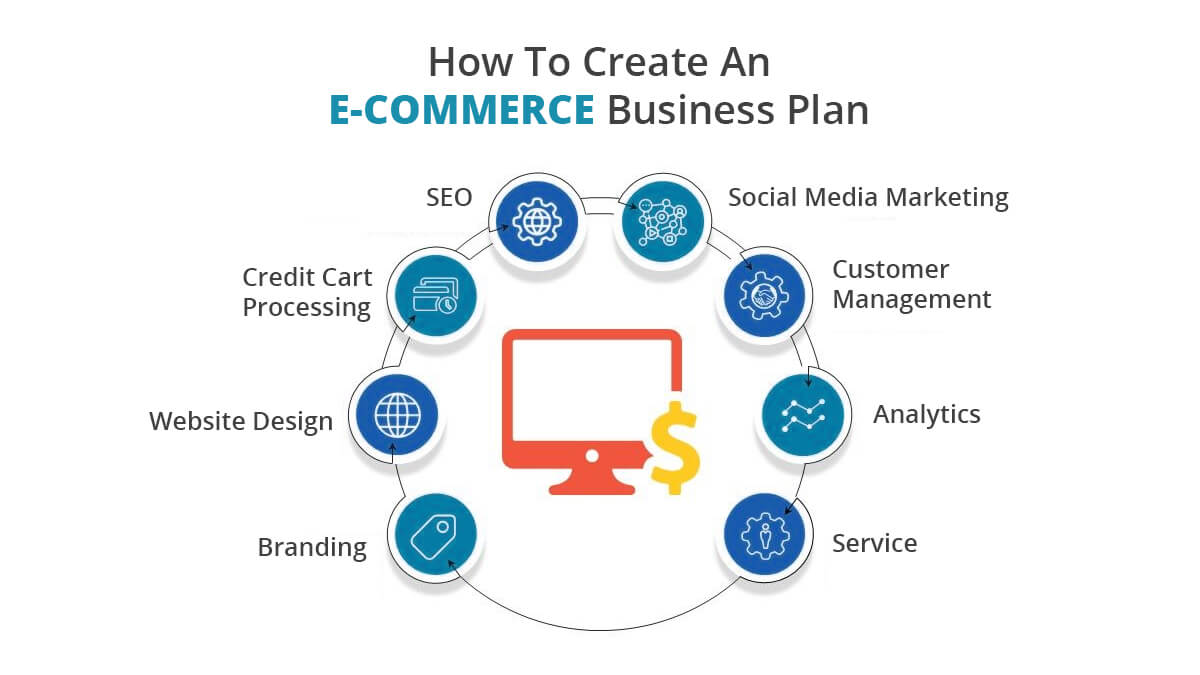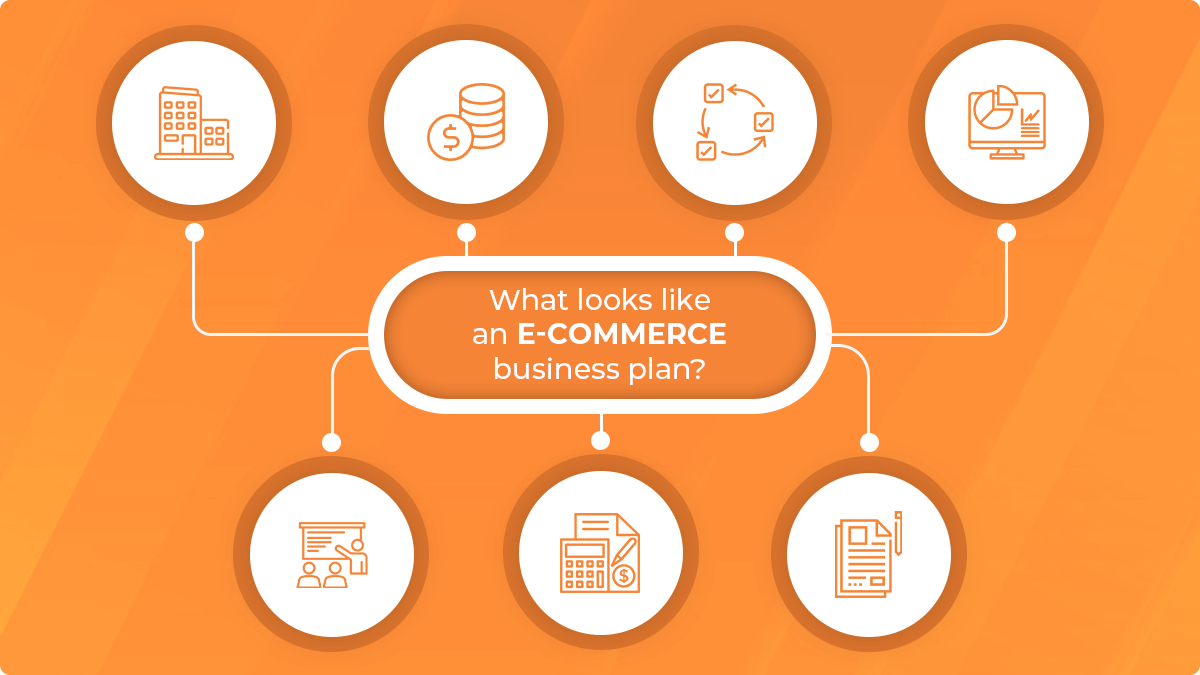What is a Business Strategy for E-Commerce?
Have you ever thought of something that you would like to achieve in your company? You’d probably jot down a few lines that outline tactics, costs, and methods behind the measures you’d take to accomplish those objectives. You have built a simple business plan if you’ve ever done so, and there isn’t too much more to it than that. A business plan for e-commerce is a roadmap for how your company will operate, finance it, who your customer will be, and how you plan to succeed.
It is essential to understand how to develop a business plan. It needs analysis, audience comprehension, budgeting, and more. Building something detailed enough is the overall secret to writing a business plan, so you never have to worry about what the next step is coming. Don’t leave anything to chance as you manage the often demanding process of starting an e-commerce company.
You don’t have to worry when you’re struggling or having a hard time imagining the next move because your business plan fully details what you’re going to do when you’re going to do it, and how much it’ll cost.
Looking for investors or partners is another component of business plan writing. In a way that is simple to understand, you need to pitch your e-commerce venture. Investors aren’t going to hop aboard anything that seems unorganized or lacks vision.
Having a detailed strategic plan that gets right to the point will convince investors that you know what you are doing and have a concrete growth strategy.
How does an E-Commerce Business Strategy Vary from Other Types?
There is a great deal of variation in how e-commerce firms meet their clients. For example, foot or vehicle traffic at a brick-and-mortar store would lead to a lot of free advertising for the brand.
On the other side, e-commerce stores can quickly get lost in the SERPs if you don’t know how to get the word out, never to be seen by anyone. When putting your business plan together, you need to keep these types of stuff in mind.
Standard organizations need to consider local permits, laws, building codes, and other factors that can impact where and how they can conduct business as far as research and development of a business plan.
Fortunately, there’s no need for e-commerce to think as much about that, but that doesn’t mean you should ignore it either. It would help if you considered any constraints or conditions that may prohibit your goods from being sourced and distributed.
Why Business E-Commerce Plans are Relevant
Knowing how to build a business strategy means nothing if you can’t see the meaning behind it. Although I believe there are more important aspects of starting a successful company, starting with a business plan, any e-commerce venture should have a stable base.
Plan of Company = GPS
You’re the driver of this business, but if you don’t know where you are going, you’ll end up going in circles, wasting time and money. Having a good business plan guides you through the steps of starting a business and growing it. Think of the strategy as your business’s GPS. You can fall back on your original plan if you ever get confused.
It Enables You to Generate Ideas.
It’s a lot simpler operation than it looks. It might seem like this looming dark cloud of terror, but the juices will start flowing once you dive in, and you’ll find out you’ve probably got a lot of great ideas. This could be your new venture’s first project, so models for business plans and how-to guides will help.
It will Help You Understand the Demand.
The most critical element of an e-commerce enterprise is getting your audience right. If you try to reach everyone, you can reach nobody. The design of a client avatar needs to be a significant part of your business strategy. Your dream customer is this avatar. Since they love you and your brand, they’re the ones buying everything you sell.
It Assists in Funding.
You would need a business plan, whether you’re looking for financing or business partners. Having a good plan shows investors that you are secure in what you do, you understand the business, and it is a wise option for them to invest with you.
This is a Perfect Way to Keep Track of Milestones.
What better way to look back and see something that you’ve been dreaming of coming to life? In a business plan, you will plot out the next few years and look back when everything comes together and keep track of everything you’ve achieved. For your new company, a business plan serves as a “to-do” list.
What Looks Like an E-Commerce business Plan?

1. Definition of the Company
Start with the basics. Your business definition is a summary of your company, offering high-level objectives and digging into the specifics of what makes your company tick. Your definition of your business can include:
Ownership in Company
Your company plan’s business ownership portion will help you figure out who is doing what and why they are eligible to do it.
List the owners of your e-commerce business. List them separately if the organization has several shareholders. Please note the degree of ownership of each owner and the duties they have decided to take on.
Name the founder(s) of your e-commerce company and what led them to start the company in the first place.
List the people who are responsible (if different from the owners) for running your company.
List the personal and professional skills, attributes, and experiences that qualify your business operators to run the company. (For example, “50 years of combined experience” technical certifications, “river-rafting guide” – whatever gives you credibility!) It’s also a good idea to list credentials you wish you had but don’t and build brief plans to obtain them.
List your business model – are you marketing to consumers directly, or are you using a business to the business model (B2B)?
List your company form – e.g., single ownership, partnership, LLC.
2. Commodities
It’s time for the fun part now: Explain what you’re selling! Start with a high-level look at the goods you currently market, focusing on their features and advantages, along with products you expect to sell in the future. If you have not already created your copy of the [business plan template for e-commerce], we suggest doing so now – you will use it to list your goods and suppliers. (Plus, it’s free and needs no personal info!)
Main Product Lines: Describe your main product lines – What kinds of products are sold in your store? “graphic print tees”graphic print tees. Emphasize your product lines’ advantages or strategic advantages: you’re not only selling dresses, but you’re also selling whimsical or quirky dresses. You may also add a little “human aspect to why you have chosen those objects and what makes them so unique to you. With the following information, then go into a bit more detail:
Differentiators: There are plenty of quirky dresses out there, so what’s different from yours? Perhaps the dress is handmade (or handmade-quality) and fully-lined, which is a massive differentiator in today’s “fast fashion” or disposable clothing atmosphere. You could sell them at a lower price than the average price point for that caliber’s dresses if they are high-quality. Perhaps you’re just using U.S. designers and suppliers. Maybe you’re hand-designing original fabric that no one else sells. Try using the format of “in a world to make this segment a little easier: “My product does Y in a world of X.”
Product Sourcing: How are you going to acquire each of the items you have mentioned? List your various suppliers of goods, storage sites, and provide information about how to get in contact with your providers.
Costs: This does not need to be a total financial run-down (we’ll get to that later), but instead should include a clear summary of how much it will cost the goods to acquire, on average, and how much it will cost consumers. Consider referencing competitors to ensure that your pricing is standard for your industry or better in this segment.
Life cycle: How long are the goods going to last? When and how are you going to buy a new stock if they are seasonal, and what are you going to do with the old? How much are new products likely to be seen by your target market? For example, with dresses, people can come back often to check out what’s new, especially as events come up or as seasons change.
3. The Processes
This applies to the company’s distribution and moving parts – how you get your goods from the manufacturer to your customers. Don’t think about the expenses yet – we’re going to cover them later.
Where is your company going to operate? List any physical places associated with business activities. This could be your home office, a new headquarters, a rented space, etc.
List your employees and management team.
List the suppliers of your items or how you can create/acquire what you sell.
List your suppliers for packaging
List your storage spaces
List your providers for shipping
List third-party service providers (such as your e-commerce service provider, tools dependent on subscription, etc.)
Build brief explanations of the processes of fulfillment, shipment, and payment selection.
4. Study of Markets
Analysis of the market will tell you whether or not people will buy what you sell.
It’s Split into Two Major Sections:
Segmentation of Audience What key demographics are you going to serve? Where are they working, how old are they, how much money are they making, and what is its value? It is beneficial to build “Buyer Personas” when you think of your target audience, different individual characters reflecting your different demographic sets. Discuss who made the sales and what they bought if you’ve sold the stuff already.
Industry Analysis:
What does the competition look like overall for your sector? Over the years, has it evolved or altered? Do you expect that this will change in the future? Are there variables that could affect its growth? For this portion, you will almost certainly have to do some research. Fortunately, white papers and reports and free resources such as Google Trends are plentiful in almost every field. This is likely to be one of the most demanding aspects of your business plan, so check out the [business plan template] examples.
Competitive Analysis:
Give a summary of who the main competitor is in the general sense and then mention a few rivals. Identify your rivals’ main strengths and weaknesses, concentrating directly on where you can outshine the competition or add value to the product. You can also take a fast dive into their online presence: Is their success in SEO stellar? Do they have an immense following on social media? Do they neglect their PPC advertising? This section blends well into your section on Marketing Strategy.
5. Strategy for Marketing
It’s essential to spend time going about your marketing plan before you open your shop. This will include how, through several various channels and platforms (such as organic search or social ads), you attract, convert, and retain consumers and are among the most critical aspects of your business strategy. After all, if you can’t draw any clients to your shop, all your other planning is pointless.
6. Project of Finance
Oh, the dreaded scheme of finances. This is the most challenging part of the business plan for many individuals and, frankly, the least fun. It’s essential, however. You’ll always need to do this part if you don’t want to write a business plan at all. This section should provide the highest degree of specificity if you are pursuing outside funding-investors care about where their money goes and need to be informed of an eventual return on their investment (or that you will not default on your loan).
7. Executive Summary
The Executive Summary is the last part you can publish, but your whole business plan is framed by it. Think of it as your company’s “book jacket,” adding critical elements and expressing your enthusiasm for what you do. Even if you think you initially have a clear understanding of your market, writing this last one is always a good practice; it will probably feel more cohesive and draw in more details once you have locked down the rest of your business plan. In the course of writing the proposal, there may even be an especially salient point or poignant value that arises,
Congratulations if you made it this far. It won’t be easy to build your business plan – but success comes to those who are willing to put in the job. Creating your business plan will help you to recognize and avoid common issues and provide you with a fast and easy source to review the most relevant details about what your organization is and how it works.
